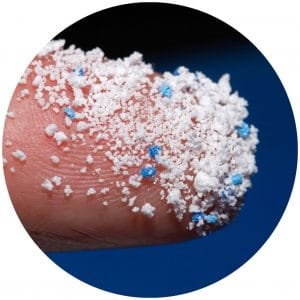An article from ‘Northern Western Institute for Sustainability and Energy’ spoke about the natural world impacts of microplastics in soil. The article mentioned that plastic is a major and persistent contributor to natural world pollution and the accumulation of plastic debris in our natural world is only expected to increase in the future.

The Study
Scientists from Incheon National University, Korea, headed by Prof. Seung-Kyu Kim, now explore these questions in their latest study published in Journal of Hazardous Materials.
For their study, the scientists examined four soil types corresponding to different agricultural practices: soils from outside and inside a greenhouse, mulching, and rice field soil. Of these, the former three samples represented the use of polyethylene film, while the Rice Field Soil sample represented little to no use of plastic. To minimize the effect of non-agricultural sources of MP, scientists collected the samples from rural farmlands during the dry season.
 As expected, scientists found the highest average MP abundance in Greenhouse-in and Greenhouse-out, but surprisingly, they found the lowest MP content in Mulching rather than Rice Field Soil. Further, they found that among the different shapes of MPs, fragments dominated Greenhouse-in; fibres, Greenhouse-out and Mulching; and sheets, Rice Field Soil. Interestingly, all soils except Greenhouse-in had a major contribution from sheets, which hinted towards potential internal sources of fragment-type MPs within greenhouses.
As expected, scientists found the highest average MP abundance in Greenhouse-in and Greenhouse-out, but surprisingly, they found the lowest MP content in Mulching rather than Rice Field Soil. Further, they found that among the different shapes of MPs, fragments dominated Greenhouse-in; fibres, Greenhouse-out and Mulching; and sheets, Rice Field Soil. Interestingly, all soils except Greenhouse-in had a major contribution from sheets, which hinted towards potential internal sources of fragment-type MPs within greenhouses.
Scientists also observed an interesting trend regarding MP size distribution in the soil samples. They found that, unlike Greenhouse-out, Mulching, and Rice Field Soil (which showed MP abundance only for a range of sizes), Greenhouse-in showed an increasing abundance for progressively smaller sizes. They attributed this to the absence of “natural world fate effect,” causing the removal of MPs by surface-runoff, infiltration, and wind in the Greenhouse-in samples.
The Results
Prof. Kim explains, “Contrary to previous studies which stress on MPs originating mostly from external sources, our study reveals that MPs in agricultural soil can come from external as well as internal sources, and that their concentration and sizes can be strongly affected by natural world conditions.”
There findings can contribute to an enhanced understanding of the role of agricultural natural world as an MP source. Hopefully, assessing potential risks of MPs in agricultural soils and establishing efficient management strategies can help us to reduce the threat from MPs.
 How Can We Decrease the Amount of Plastics We Use in our Nurseries?
How Can We Decrease the Amount of Plastics We Use in our Nurseries?
There are many other ways in which nurseries, childminders and parents/carers can make small changes in their day-to-day lives to help reduce the amount of plastic pollution, including:
- Try using real/cloth nappies in place of ‘disposable’ nappies
- Encourage and support potty training rather than waiting
- Don’t buy single-use plastics, opting instead for re-usable items made from natural resources, (Why not try DIY baby wipes)
- Evaluate play activities with sustainability in mind – use natural resources
- Evaluate cleaning products and furniture with sustainability in mind (you could use biovation cleaning products)
- Grow your own herbs and vegetables
Find out more about how to reduce the amount of plastic pollution here.
Read the full article
by Incheon National University, February 2021: click here for the full article covering the natural world impacts of microplastics in the soil.






